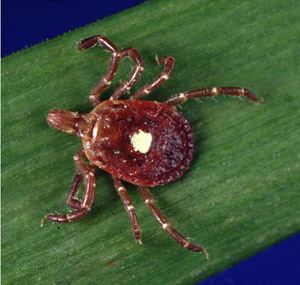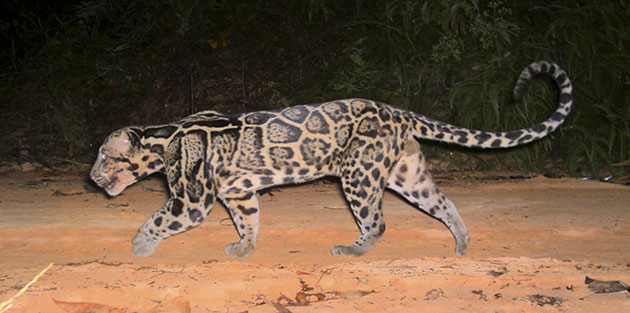TOP STORIES  Nutrient enrichment linked to diseases in humans and wildlife
Nutrient enrichment linked to diseases in humans and wildlife
Scientists have provided a rather grim prognosis for global health: the recent increase in nutrient enrichment due to human activities, such as nitrogen pollution through fossil fuel combustion, is likely contributing to several varieties of infectious diseases in humans and wildlife.
Lead author Pieter Johnson from the University of Colorado and colleagues referenced several studies showing the links—both direct and indirect—between nutrient enrichment and the emergence and resurgence of human and wildlife illnesses, such as limb malformations in amphibians and malaria, West Nile virus and schistosomiasis in humans.
Tropical and subtropical regions of Africa, Asia and South America are especially at risk.
24 February 2010
K Kline
Photo credit: Jurvetson/Flickr
 Emerging tick-borne diseases: a domestic ecological mystery
Emerging tick-borne diseases: a domestic ecological mystery. . . An interdisciplinary team at Washington University in St. Louis has been keeping a wary eye on emerging tick-borne diseases in Missouri for the past 20 years.
. . . The team recently developed a sophisticated DNA assay, described in the March 2010 issue of Emerging Infectious Diseases, that allows them to identify which animal hosts are transmitting pathogens to ticks.
“This new technology is going to be the key to understanding the transmission of diseases from wildlife to humans by ticks,” Allan says.
25 February 2010
D Lutz
Photo courtesy of U.S. Centers for Disease Control
 ]
] How Has Human Sprawl Affected Bird Migration—And the Spread of Avian Diseases?
How Has Human Sprawl Affected Bird Migration—And the Spread of Avian Diseases?As human population numbers grow, oceans of people seem to spread out into every conceivable environment—even the forests and estuaries used for eons by migratory birds as nutrient-rich stopovers on their longer annual journeys between feeding areas and birthing grounds.
. . . But tired and hungry birds may not have the wherewithal or instinctual coding to seek out alternative resting areas, so they make do with habitat crowded and compromised by human incursion.
Close proximity to avian life hasn’t presented too big of a problem for people in the past, but new concerns about the spread of bird flu (the H5N1 virus) via infected migratory birds (which presumably infect local populations of domestic birds) does have some scientists worried that persistent human expansion could indirectly lead to a disease pandemic of global proportions.
25 February 2010
Photo credit: T Brakefield/Getty Images
 Plagued by Plague: New Research Shows Widespread Risk to Wildlife
Plagued by Plague: New Research Shows Widespread Risk to WildlifeThe effects of plague on wildlife may have been underestimated in the past, according to research published today in a special issue of Vector-Borne and Zoonotic Diseases.
. . . Eruptions of the fatal disease have wiped out prairie dog colonies, as well as dependent ferret populations, in many locations over the years.
The newly published work demonstrates that plague continues to affect the black-footed ferret, one of the most critically endangered mammals in North America, as well as several species of prairie dogs, including the federally threatened Utah prairie dog—even when the disease does not erupt into epidemic form.
24 February 2010
Photo credit: D Biggings/USGS
TOP READ LINKS FROM LAST WEEK
News
- Congressman sees need for more zoo and wildlife veterinarians
- 'Kidnap' a joey to save a species
- Wild bird telemetry project helps FAO to better understand disease ecology of emerging diseases and the role of migratory birds in transmission dynamics
- New and Ongoing Wildlife Mortality Events Nationwide
- Flamingos at risk from deadly avian disease
- TWRA Confirms First Cases of White Nose Syndrome in Tennessee Bats
- Dolphin Diseases Linked to Human Ailments and Ocean Health
- Gray Whale Dies from Sucking Sand
- UPDATE: White Nose Syndrome Confirmed in Critical Cave
- ProMED Rabies, bovine, equine, vampire bat - Argentina
- Disease surveillance and referral bias in the veterinary medical database
- Journal of Wildlife Management - February 2010 Issue
- Consumption of Baits Containing Raccoon Pox-Based Plague Vaccines Protects Black-Tailed Prairie Dogs (Cynomys ludovicianus)
OTHER WILDLIFE HEALTH RELATED NEWS
Photo credit: HO/Reuters
 Week in wildlife [image gallery]
Week in wildlife [image gallery]- Photographer takes to the water for perfect shots in the Great Rift Valley [image gallery]
- How Can Accidental Captures of Loggerhead Turtles Be Reduced? [cited journal article here]
- State's South-West fish in dire straits [southwestern Australia]
- Red Tide: Researchers Issue Outlook for a Significant New England Bloom of a Toxic Alga in 2010
Coral News
- Corals Partner Up With Heat-Resistant Algae
- Deep-sea trawling is destroying coral reefs and pristine marine habitats
- Coral reefs form on 'ancient template'
Huh, That's Interesting!
- Bird wing shape changing as possible adaptation to environmental change [cited journal article here]
- Viruses Helped Shape Human Genetic Variability [cited journal article here]
- A Sticky Little Lizard Inspires a New Adhesive Tape




